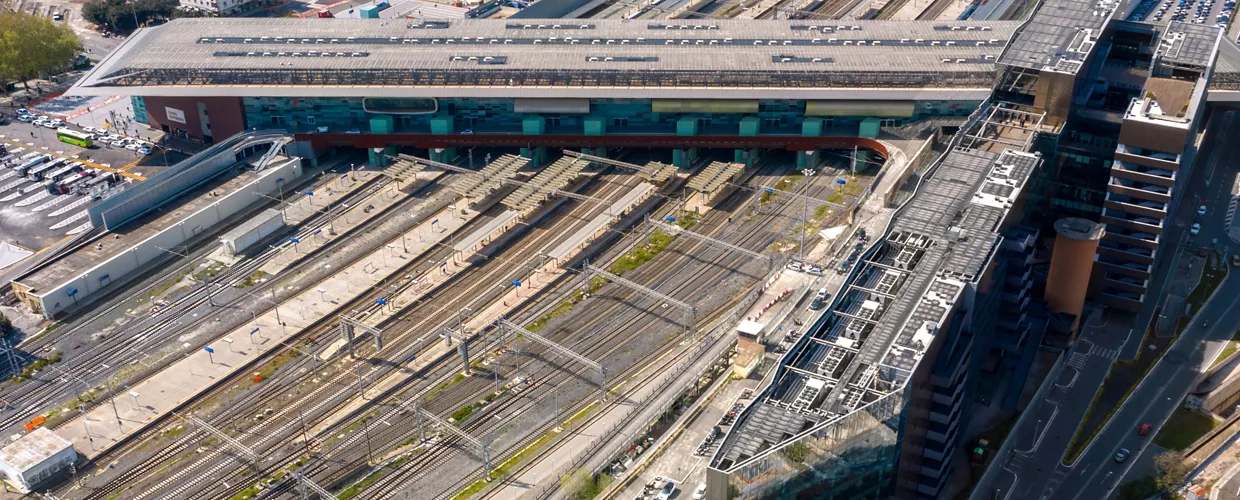This content was automatically translated. View the original text.

Overview
One of the most important railway stations in Rome
The Tiburtina Station is a symbol of Rome, its history and its future, a place teeming with life designed to measure man. Located in the northeastern part of the city, it is the second train station of the Capital, after Termini. At the beginning called Portonaccio, it was inaugurated at the end of the 19th century and underwent expansion work in 1930, under the supervision of the architect Angiolo Mazzoni, former renovator of the Termini Station.
Further expanded, modernized and redesigned to fit travelers, it was reopened in 2011. Today it is an important railway and public transport hub with connections throughout Italy and Europe, which occupies about 18,000 square meters and includes offices, VIP lounges, shops, restaurants and artistic exhibitions in a single place designed not only to be a railway interchange, but also an opportunity for social and urban interaction.
In line with the times in terms of eco-sustainability and energy consumption management, it manages the passage of about 500 trains per day, 140 thousand daily transits and 51 million travelers every year. Essential for reconnecting two neighborhoods, Pietralata and Nomentano, it captures the eye with its modern appearance and its large windows.
Piazzale della Stazione Tiburtina, 00162 Roma RM, Italia